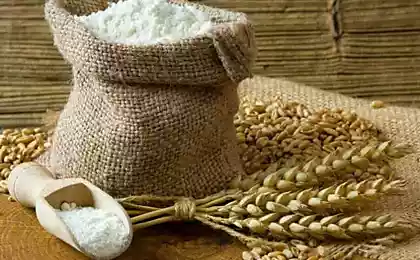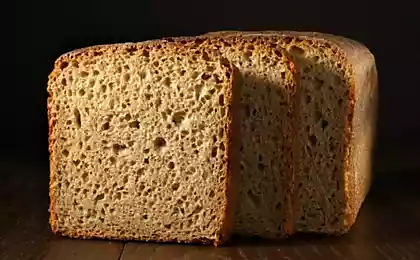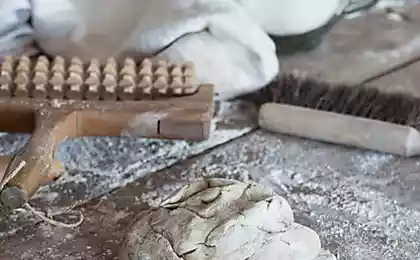528
Tuscan bread: delicious rustic bread with a thick crispy crust!
It is an Italian traditional bread of Tuscany. The absence of salt in the dough.
The bread is simple, rustic, with a thick crispy crust and soft white flesh. Is the basis for the preparation of many Tuscan dishes:
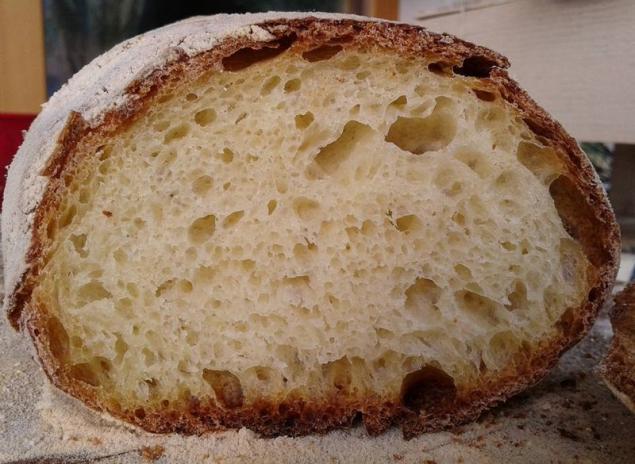
Tuscany is famous for its olive oil, cheeses and salami. And that Tuscan bread is best for their tasting, as well as perception of all the taste, thanks to its neutral taste due to the lack of salt.
2014 Tuscan bread is protected as a mark of quality DOP. DOP, that is Denominazione di Origine Protetta (denomination of protected origin), indicates that product quality and taste characteristics which is wholly or the majority required of a geographical area, which is its production and processing. This takes into account not only the natural features of a particular region, but also the human factor. The distinguishing sign of the DOP assigned to those products, the entire processing cycle which, starting from the production of primary matters to the final product, is carried out in a particular area. Consequently, none of the production stages may not occur outside of specific, strictly defined, geographical sector.
For making bread using bread yeast and baked in wood ovens.
But in house conditions it is possible to obtain an excellent result, which is not different from the original.
And now to cooking Tuscan bread. Please be patient! You will find a long process of natural fermentation.
1st stage or 1st dough or Biga (Dolgobrodskaya Opara)
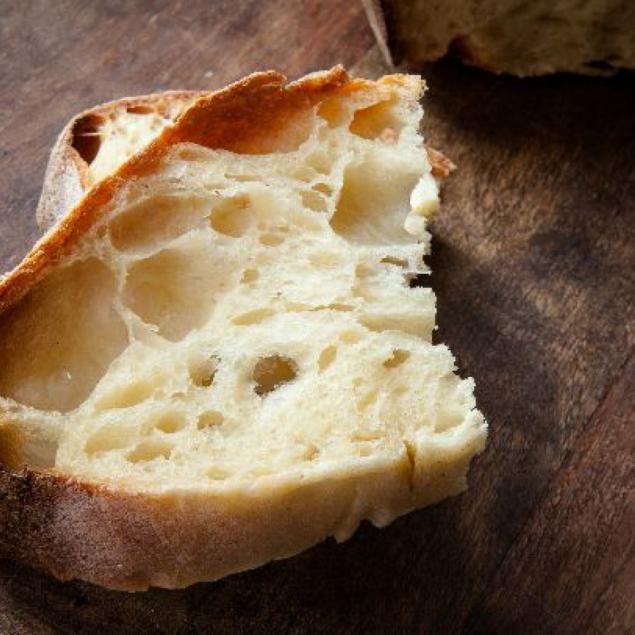
Cooking
The 1st phaseto Dissolve the bread yeast with water, add the flour and knead the dough put in a deep bowl, cover with clingfilm and put in warm place to ferment for 10 hours.
The 2nd stageInto the prepared dough adding water and flour. Then knead the dough, vimosewa for 10 minutes, adding if necessary a little flour. The batter should be elastic.
To shift into a deep bowl, cover with cling film and leave in a warm place for about 6 hours. Fermentation should be long lasting, to increase two times (further – 2nd dough).
3rd stage2nd finished dough combine flour and warm water, knead for about 10 minutes. The dough should be elastic, slightly soft, but not tight. Then put it in a warm place to ferment for 4 hours.
Once the dough is ready, shape it bread oval. Put on a sheet lined with baking paper, sprinkle the surface with a little flour and leave in a warm place for 2 hours. The bread will slightly increase in volume. Now you can and bake at 200-220 degrees for about 40 minutes.
Cook with love!
P. S. And remember, only by changing their consumption — together we change the world! ©
Source: rusita7615.livejournal.com/3302.html
The bread is simple, rustic, with a thick crispy crust and soft white flesh. Is the basis for the preparation of many Tuscan dishes:
- ribollita,
- Poppa tomato,
- panzanella,
- aquacotta,
- Tuscan crostini and more.

Tuscany is famous for its olive oil, cheeses and salami. And that Tuscan bread is best for their tasting, as well as perception of all the taste, thanks to its neutral taste due to the lack of salt.
2014 Tuscan bread is protected as a mark of quality DOP. DOP, that is Denominazione di Origine Protetta (denomination of protected origin), indicates that product quality and taste characteristics which is wholly or the majority required of a geographical area, which is its production and processing. This takes into account not only the natural features of a particular region, but also the human factor. The distinguishing sign of the DOP assigned to those products, the entire processing cycle which, starting from the production of primary matters to the final product, is carried out in a particular area. Consequently, none of the production stages may not occur outside of specific, strictly defined, geographical sector.
For making bread using bread yeast and baked in wood ovens.
But in house conditions it is possible to obtain an excellent result, which is not different from the original.
And now to cooking Tuscan bread. Please be patient! You will find a long process of natural fermentation.
1st stage or 1st dough or Biga (Dolgobrodskaya Opara)
- sourdough 50 g
- flour 50 g
- warm water 20 ml
- 1st dough (sourdough)
- flour 150 g
- warm water 70 ml
- 2nd batter
- flour 350 g
- warm water 150 ml

Cooking
The 1st phaseto Dissolve the bread yeast with water, add the flour and knead the dough put in a deep bowl, cover with clingfilm and put in warm place to ferment for 10 hours.
The 2nd stageInto the prepared dough adding water and flour. Then knead the dough, vimosewa for 10 minutes, adding if necessary a little flour. The batter should be elastic.
To shift into a deep bowl, cover with cling film and leave in a warm place for about 6 hours. Fermentation should be long lasting, to increase two times (further – 2nd dough).
3rd stage2nd finished dough combine flour and warm water, knead for about 10 minutes. The dough should be elastic, slightly soft, but not tight. Then put it in a warm place to ferment for 4 hours.
Once the dough is ready, shape it bread oval. Put on a sheet lined with baking paper, sprinkle the surface with a little flour and leave in a warm place for 2 hours. The bread will slightly increase in volume. Now you can and bake at 200-220 degrees for about 40 minutes.
Cook with love!
P. S. And remember, only by changing their consumption — together we change the world! ©
Source: rusita7615.livejournal.com/3302.html

